More actions
m Tweaks. |
Added cats. |
||
| Line 2: | Line 2: | ||
{{dc|W}}{{start|hat makes a recording great?}} Why are there some disks that we go back to again and again? What are those qualities that come together to form the gestalts we call our favorite songs, artists, and disks? Why do certain bands sing to us in a way that others do not? What qualities do we seek in the tunes that become the soundtracks of our lives? | {{dc|W}}{{start|hat makes a recording great?}} Why are there some disks that we go back to again and again? What are those qualities that come together to form the gestalts we call our favorite songs, artists, and disks? Why do certain bands sing to us in a way that others do not? What qualities do we seek in the tunes that become the soundtracks of our lives? | ||
[[File:Tubez.jpg|thumb|600px]] | |||
I’m not suggesting that there’s an entirely rational way to analyze music. Yes, you can break it down into its parts, but music has that ineffable aesthetic quality shared by everything else we call “art.” Perhaps that’s the question: what do you consider the most ''artistic'' music in your life? What is your List? | I’m not suggesting that there’s an entirely rational way to analyze music. Yes, you can break it down into its parts, but music has that ineffable aesthetic quality shared by everything else we call “art.” Perhaps that’s the question: what do you consider the most ''artistic'' music in your life? What is your List? | ||
| Line 11: | Line 9: | ||
OK, so here are my working criteria: | OK, so here are my working criteria: | ||
{{Big|The whole must be appealing.}} | |||
Yes, I’m talking about the entire album, but also a sum of the individual parts. There are some bands that have strong lyrics, but mediocre musical appeal. Yes, parts can be isolated and enjoyed, but each song must contribute to the album; each voice must be a strong or integral part of the composition. Nothing should be out of place or weak. | Yes, I’m talking about the entire album, but also a sum of the individual parts. There are some bands that have strong lyrics, but mediocre musical appeal. Yes, parts can be isolated and enjoyed, but each song must contribute to the album; each voice must be a strong or integral part of the composition. Nothing should be out of place or weak. | ||
{{Big|The recording quality must be excellent.}} | |||
It kills me when an album that should be great is recorded poorly: overproduced, poor miking, digital sounding. I want a big sound stage and the clarity of each part. Yes, it’s fine when parts are highlighted – some are more important at times – but I should be able to pick out each distinct instrument when I want to. There should be no exaggerated elements that are not on purpose, like a distorted bass note or a wall of sound from a single steel guitar. | It kills me when an album that should be great is recorded poorly: overproduced, poor miking, digital sounding. I want a big sound stage and the clarity of each part. Yes, it’s fine when parts are highlighted – some are more important at times – but I should be able to pick out each distinct instrument when I want to. There should be no exaggerated elements that are not on purpose, like a distorted bass note or a wall of sound from a single steel guitar. | ||
''' | {{Big|I must ''want'' to listen to it.}} | ||
The first two criteria can be met, but the music must call me back after listening and pull me in at the moment. Here’s that aesthetic | The first two criteria can be met, but the music must call me back after listening and pull me in at the moment. Here’s that aesthetic response—the art that grabs you and holds you, affecting in rational and visceral ways. Sometimes this one takes a few listens. There are many compositions that I don’t like immediately, just like there are many novels, films, paintings, and poems that require more consideration or a re-reading before they take hold. Yet, there should be a moment when I find myself thinking about a piece, or humming a melody from it—a time when I can’t wait to get home to hear it again. A time when it becomes a favorite. | ||
So those are the criteria, as arbitrary and subjective as they are. And without further ado, here’s my current list. | So those are the criteria, as arbitrary and subjective as they are. And without further ado, here’s my current list. | ||
| Line 96: | Line 94: | ||
[[Category:02/2011]] | [[Category:02/2011]] | ||
[[Category: | [[Category:Listening]] | ||
[[Category:Chuck Mangione]] | |||
[[Category:Counting Crows]] | |||
[[Category:Donald Fagen]] | |||
[[Category:Harry Connick, Jr.]] | |||
[[Category:Led Zeppelin]] | |||
[[Category:Lyle Lovett]] | |||
[[Category:Phil Collins]] | |||
[[Category:Pyotr Ilyich Tchaikovsky]] | |||
[[Category:Rush]] | [[Category:Rush]] | ||
[[Category:Steely Dan]] | |||
Latest revision as of 15:36, 2 January 2025
Top Ten Albums (Or The List)
What makes a recording great? Why are there some disks that we go back to again and again? What are those qualities that come together to form the gestalts we call our favorite songs, artists, and disks? Why do certain bands sing to us in a way that others do not? What qualities do we seek in the tunes that become the soundtracks of our lives?
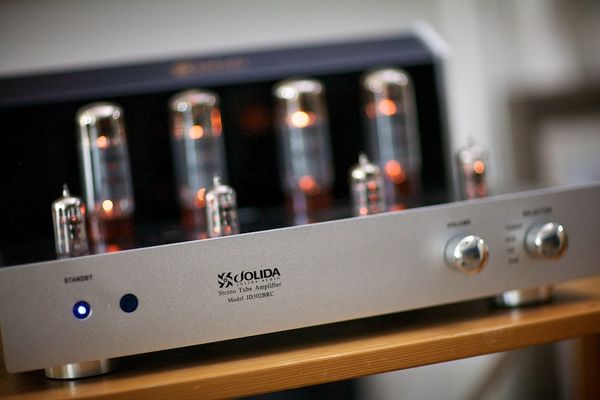
I’m not suggesting that there’s an entirely rational way to analyze music. Yes, you can break it down into its parts, but music has that ineffable aesthetic quality shared by everything else we call “art.” Perhaps that’s the question: what do you consider the most artistic music in your life? What is your List?
What are those qualities that need to be present for an album to make the List? Making it up of songs would be almost impossible, though that might be an exercise I might try in the future. For now, I will limit my List to entire works – what we used to call LPs when we listened to vinyl. I know that iTunes got us out of the habit of looking at music in this way, but I’m a fan of longer expressions – like novels, symphonies, albums, collections. Yes, it’s arbitrary, but so is this whole exercise.
OK, so here are my working criteria:
The whole must be appealing.
Yes, I’m talking about the entire album, but also a sum of the individual parts. There are some bands that have strong lyrics, but mediocre musical appeal. Yes, parts can be isolated and enjoyed, but each song must contribute to the album; each voice must be a strong or integral part of the composition. Nothing should be out of place or weak.
The recording quality must be excellent.
It kills me when an album that should be great is recorded poorly: overproduced, poor miking, digital sounding. I want a big sound stage and the clarity of each part. Yes, it’s fine when parts are highlighted – some are more important at times – but I should be able to pick out each distinct instrument when I want to. There should be no exaggerated elements that are not on purpose, like a distorted bass note or a wall of sound from a single steel guitar.
I must want to listen to it.
The first two criteria can be met, but the music must call me back after listening and pull me in at the moment. Here’s that aesthetic response—the art that grabs you and holds you, affecting in rational and visceral ways. Sometimes this one takes a few listens. There are many compositions that I don’t like immediately, just like there are many novels, films, paintings, and poems that require more consideration or a re-reading before they take hold. Yet, there should be a moment when I find myself thinking about a piece, or humming a melody from it—a time when I can’t wait to get home to hear it again. A time when it becomes a favorite.
So those are the criteria, as arbitrary and subjective as they are. And without further ado, here’s my current list.

This first list, I will consider my All Time List (OK, at least right now)—recordings that have spoken to me since they came out, or since I discovered them, and continue to have an impact on my life. They are in order of my preference.
![]() note: It’s not lost on me that this list betrays my upbringing as a middle-class, white, heterosexual, suburban male. I make no apologies for that, but please keep in mind that this list is incomplete, partial, and ever-changing. Yes, I know it’s white-male-centric. My musical maturity is represented by my choices below, but will also be reflected in subsequent blog posts about music. (I hope.) My perspective has widened, but these are its foundation.
note: It’s not lost on me that this list betrays my upbringing as a middle-class, white, heterosexual, suburban male. I make no apologies for that, but please keep in mind that this list is incomplete, partial, and ever-changing. Yes, I know it’s white-male-centric. My musical maturity is represented by my choices below, but will also be reflected in subsequent blog posts about music. (I hope.) My perspective has widened, but these are its foundation.
Steely Dan — Gaucho
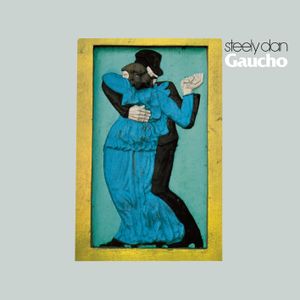
Despite the reputation of Steely Dan’s entire oeuvre in audiophile circles, this was a pretty easy one for me because of one song in particular. “Babylon Sisters” might be one of the best songs ever recorded, and it’s followed by one after another. Not only is Gaucho impeccably recorded, it’s both light-hearted and serious, as if told from a narratorial perspective of one who is older and wiser looking back at a time in his life of sexual discovery and frustration. These are pivotal moments of passion and longing and exclusion — moments that the more mature narrator has reflected on for years, but was unaware of their significance at the time.
Gaucho is a beautiful expression of longing and nostalgia told from a position of an outsider who wants in — someone who wants to connect, to belong. This record speaks to me on many levels and reflects many different times in my life. To me, it is both an expression of youth and maturity. It is Steely Dan at their best — and that’s saying a lot.
Donald Fagen — The Nightfly
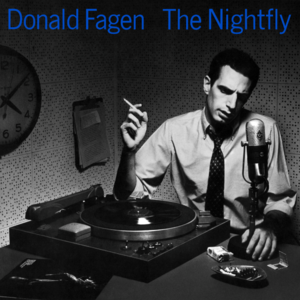
“What a beautiful world it will be…” This album, like SD’s Gaucho above, is simply a masterpiece. It begins with the audiophile’s dream — “I.G.Y.” — and includes the sublime “Maxine,” the naive and innocent “New Frontier,” the more mature “Nightfly,” and the quirky and fun “Walk Between the Raindrops.” The Nightfly is a coming-of-age album, one that Fagen’s liner notes suggests represents “certain fantasies that might have been entertained by a young man growing up in the remote suburbs of a northeastern city.”
This album is not for everyone, but Fagen’s longings and preoccupations seem to reflect mine when I was young. Along with his second solo release Kamakiriad, he has a perspective through the lens of technology that colors his daily outlook. These songs are both a longing for a better world, but this naiveté and youthful fantasy is always accompanied, however subtly, by a strain of reality that keeps clearing the smoke. It’s OK to have dreams, as long as you keep you feet on the ground. That’s fine, Fagen seems to say, life is still wonderful.
Lyle Lovett — Joshua Judges Ruth
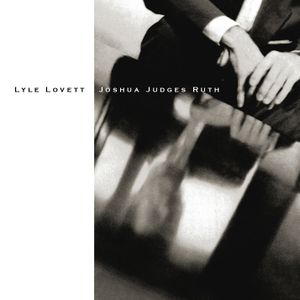
I think it was David that first played this CD for me. We were likely auditioning some speakers at the local audio store, and he popped this gem in. I was familiar with Lovett already; I owned his Lyle Lovett and His Large Band CD, so I knew this one would be good. It wasn’t. It was fantastic. It opens strong with “I’ve Been to Memphis” and “Church” — both quirky and eclectic in Lovett’s unique style — but “She’s Already Made Up Her Mind” haunted me for days after. “North Dakota” had a similar effect. The former builds from a feeling of sadness and loss to impotence and death — the music perfectly reflects the situation of hopeless and despair. This is the end — there’s a finality here that is barely being kept under control. Lovett’s voice is perfect for songs like this.
The rest of the album is not sad, but thoughtful and understated. It’s a disk that deserves to be listened to with the lights low on a good system because anything else will rob it of its impact and subtlety. I own many of Lovett’s disks, but this one always finds its way back into the transport. Thanks, David.
Counting Crows — August and Everything After
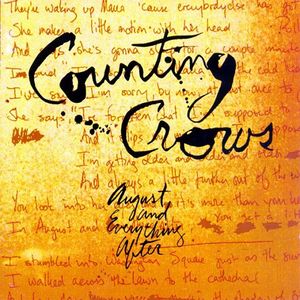
I bought this disk immediately after hearing “Round Here” on the radio, and it has been one of my favorites ever since. I was struck by both the melody and the poetry of the lyrics, like the first lines: “Step out the front door like a ghost / into the fog where no one notices / the contrast of white on white.” Like the rest of the album, it examines the the mixed message that might be at the center of American psyche: the desire to be famous, unique, an individual and the neuroses that force us to conform, to consider decorum, to join.
Perhaps my favorite song is “Anna Begins” — maybe the most subtle expression of this theme, and the most individual. It’s the struggle to control that which we most desire at the time we most desire it. It’s the disparity between feelings and the language we use to express and control them. Every track on this disk is magical and reflects the conflicts that are uniquely American. Perhaps this is why it speaks to me so poignantly. This is Counting Crows’ finest album — one they have yet to top.
Rush — Moving Pictures
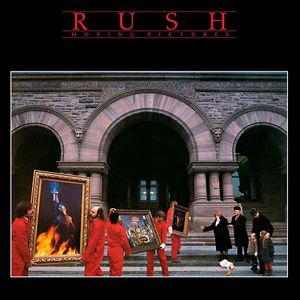
I have so many memories associated with this album that if it had been recorded better, it would probably be my number one. Picture me in my father’s mid-80’s Bertone (think mid-engine Fiat coupé) tearing down a deserted back road at midnight, top off, listening to “Red Barchetta” at full volume. This, the definitive Rush album, is so full of energy and evokes such a fuck-you attitude toward an increasingly conservative society, it really is a testament to what has become a major part of my outlook on life and my musical tastes.
This album is Rush’s transition from a progressive band to one that’s more main-stream in the eighties — the height of their career. This is a bittersweet transition, since their recording quality went down drastically, their minimalism as a power trio was superseded by synthesizers and overproduction, and their edge became well, dulled. I think they managed to get it back with later works; however, their recording quality never did recover. In fact, I find it one of my life’s serious disappointments that Rush’s later albums aren’t recorded as well as their earlier ones. Still, Moving Pictures is epic and always makes me want to drive fast and far.
Chuck Mangione — Live at the Hollywood Bowl
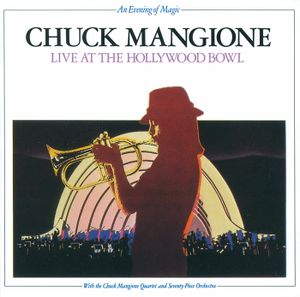
So this was really between this double album and his studio one with the same band: Feels So Good. Both are beautifully produced, but the Hollywood Bowl has so much more. This is Mangione at the top of his game — with a full stage orchestra. He is obviously from the age of the big band revival via Stan Kenton, and this album reflects this passion. It is just a joy to listen to: the big arrangements, the excellent musicians, and the flugelhorn out front. Say what you will about Mangione, his music is strong and even resonates over thirty years later.
I need to give a shout out here to Maynard Ferguson, too. Maynard is a thrill to listen to — if Mangione is a poet, Ferguson is an athlete. Both horn players had a tremendous impact on me as a young trumpet player, and they introduced me to the greats: Miles Davis, Lee Morgan, and Wynton Marsalis. Even though I had to give up the trumpet, I don’t have to give up my appreciation of the masters of this great instrument.
Harry Connick, Jr. — She
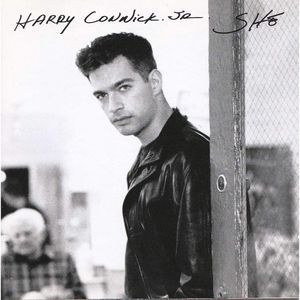
This album is another left-over from my first wave as an audiophile. She is a fabulous disk for testing new equipment, and it was my standard for critical judgments. This 1994 CD is one of two in which Connick uses a more main-stream band and tries his hand at radio-friendly songs. That’s not to say this CD is not innovative or experimental, but it does diverge from his traditional big-band sound. While I generally like his big band music, for some reason She is the album I most associate with Connick.
First off, it is remarkably recorded — every part is miked perfectly, from cymbals to the beat box. Secondly, it ranges from untraditional love songs to moodier, introspective charts. I like the instrumentals the best — “Joe Slam and the Spaceship” and “Funky Dunky” are fun and show off the sonic range of this recording. Connick followed She with Star Turtle, a similar album, but a bit more conceptual and not quite as solid. However, it, too, is worth a listen, especially since it is produced just as well. Think you have good equipment? Put in this CD to find out.
Phil Collins — Face Value
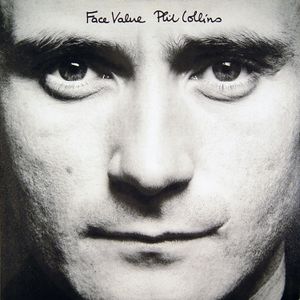
To me, Phil Collins epitomizes the eighties. He is the best of all that I used to listen to back then, but don’t anymore: REO Speedwagen, Chicago, Duran Duran, Genesis, Tears for Fears, Styx, Boston, Yes — you get the picture. Phil Collins’ first solo album is arguably his best; in fact, I would group his third — No Jacket Required — in with the ones that died in the eighties. Not only is FV well recoded, it is diverse, representing the best of why I liked Collins: his strong and haunting ballads, his brass-filled instrumentals, and his precise pop songs.
His second disk, Hello I Must Be Going, is also a solid work, and contends with Face Value for this spot. However, I find myself coming back to this first album much more than the second. I particularly like “Behind the Lines” — a remake of an earlier Genesis song that Phil made more poppy — and “Hand in Hand” — an upbeat and powerful instrumental that features Collins’ unique and driving drums right in front. Also, “If Leaving Me Is Easy” is the Phil Collins pop ballad at its finest. Face Value is still a great disk, and a pleasant reminder of the eighties.
Led Zeppelin — Physical Graffiti
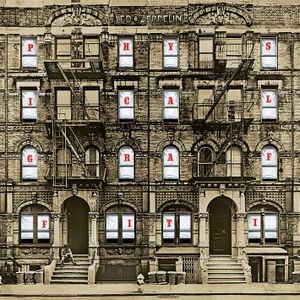
I would be remiss if I did not include Led Zeppelin on this list. My relationship with Zeppelin is like my relationship with my best friend Kip: it started in the eighties and was very strong; I don’t listen to them much anymore, but when I do, it’s like coming home. Kip introduced me to Zeppelin in the mid-eighties, and I quickly became a fan. Unfortunately, it was just after the band broke up because of John Bonham’s death, so I never got to see them live — though Kip and I did see Page and Plant in the early-nineties.
Each of their albums is a favorite, really, and each has associated memories. Like, Kip and I tried to get “The Lemon Song” off of Zeppelin II as our senior class song. As I remember, we were pretty successful in our campaigning, but we still ended up with “Lean on Me” (!). We just wanted to hear the chorus sing “Squeeze my lemon, till the juice runs down my leg” during commencement. Since I have to choose one album here, I pick Physical Graffiti, since it’s the one I find myself listening to most frequently. Actually, it was a difficult decision; Zeppelin III was also a strong contender. I like Physi because of its diversity — it still has Zeppelin’s R&B goodness as well as more acoustic and experimental charts. It is Zeppelin at their best.
Tchaikovsky — Serenade in C for Strings
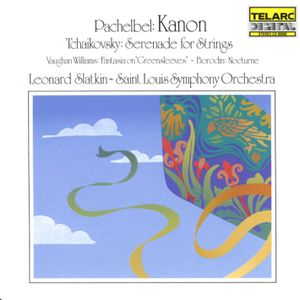
This particular recording was released by Telarc in 1983, so I’m sure there have been better recorded releases since, but this one also has Pachelbel’s Canon and Borodin’s “Nocture for String Orchestra”—two more excellent pieces. In addition, the performance is by Leonard Slatkin and the St. Louis Symphony. I have heard Neville Marriner conduct the same Tchaikovsky, but it left me flat. Tchaikovsky wrote his Serenade at the same time he wrote his famous 1812 Overture, but the works couldn’t be more dissimilar. The former was written in an 18th-century style, and the first movement is Tchaikovsky’s homage to Mozart. While it does have Mozart’s style, Tchaikovsky also used his Russian spirit by adapting a familiar folk song into the finale. Tchaikovsky’s Serenade in C for Strings is a subtle and atmospheric piece that reminds me of my days playing in the orchestra as a youth. Ironically, it has no brass.

Honorable mentions go to The Talking Head’s Stop Making Sense; the Dave Matthews Band’s Crash; Peter Gabriel’s So or Secret World Live; Eric Clapton’s Unplugged; 10,000 Maniac’s Unplugged; Medeski, Martin, and Wood’s Friday Afternoon in the Universe; Ricky Lee Jones’ Pop Pop; Ben Folds’ Rockin’ the Suburbs; Tracy Chapman’s self-titled album; Cake’s Fashion Nugget; Pink Floyd’s The Wall; Roger Waters’ The Pros and Cons of Hitchhiking; Toad the Wet Sprocket’s Fear; REM’s Automatic for the People; and Barenaked Ladies’ Gordon. I’ll likely include more about these on subsequent posts.
